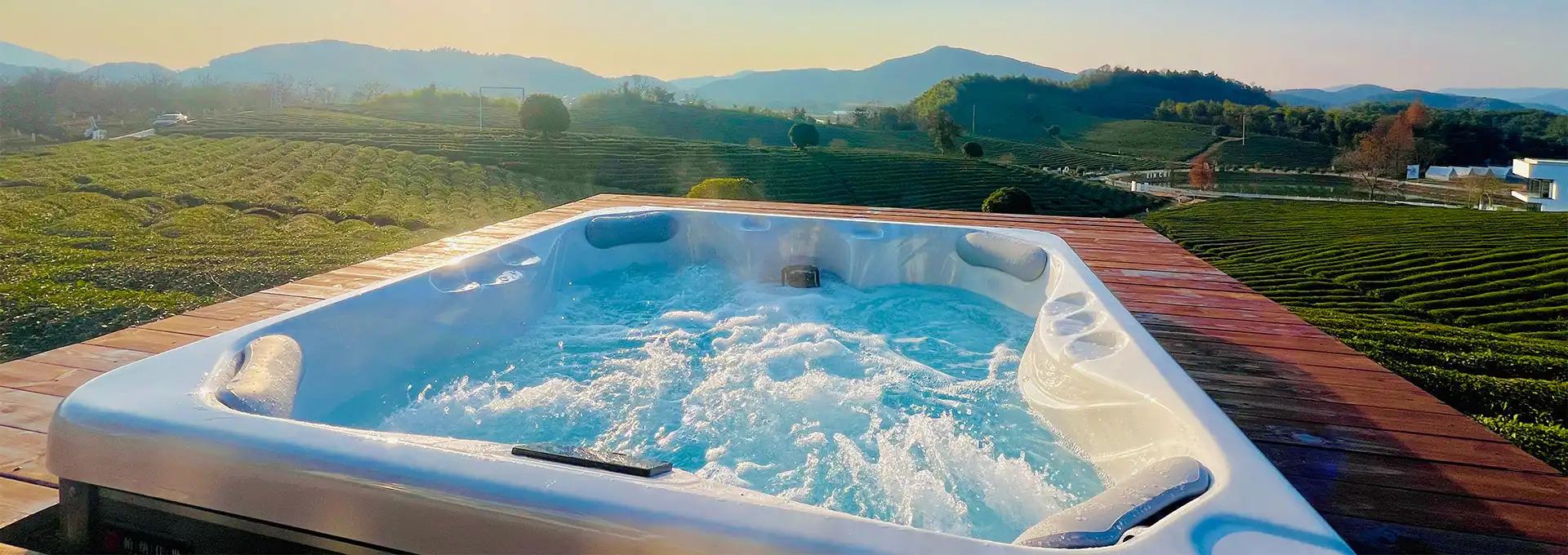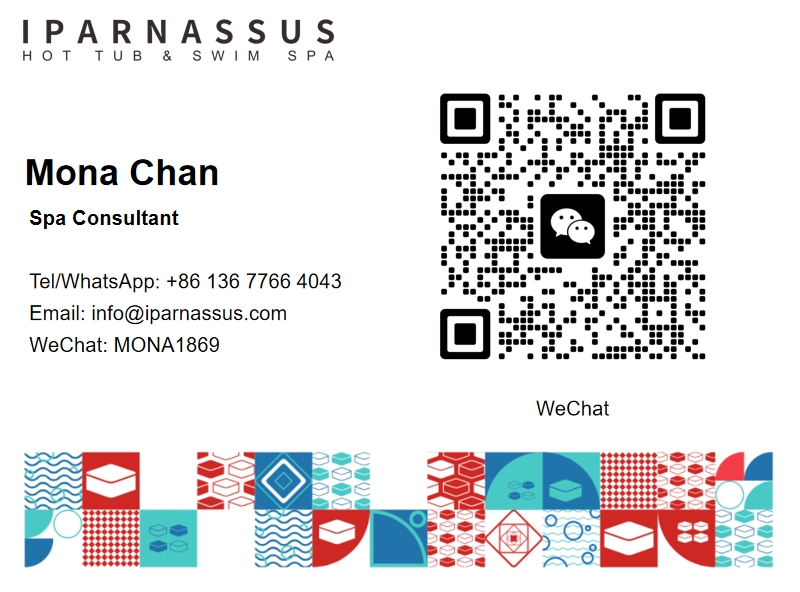How does a cold plunge tub work?
2025-05-27 17:25:42
Cold plunge tubs have gained popularity in recent years as a wellness tool for their potential health benefits and invigorating effects. These specialized tubs are designed to immerse the body in cold water, typically between 50-59°F (10-15°C), for short periods. But how exactly does a cold plunge tub work, and what makes it different from simply jumping into a cold pool or lake? In this blog post, we'll explore the mechanics behind cold plunge tubs, their features, and how they contribute to the cold therapy experience.
What are the main components of a cold plunge tub?
Insulated Tub Structure
The foundation of a cold plunge tub is its insulated structure. Unlike regular bathtubs or pools, cold plunge tubs are specifically designed to maintain low water temperatures for extended periods. The tub is typically constructed with high-quality insulation materials, such as polyurethane foam or advanced composite materials. This insulation serves a dual purpose: it helps keep the cold water at the desired temperature and prevents heat transfer from the surrounding environment. The insulated structure of a product is crucial for its efficiency, as it minimizes energy consumption and ensures a consistent cold therapy experience. Some advanced cold plunge tubs even feature double-walled construction for enhanced insulation performance.
Cooling System
At the heart of a cold plunge tub's functionality is its cooling system. This system is responsible for chilling the water and maintaining it at the desired temperature. Most cold plunge tubs utilize a refrigeration-based cooling system, similar to what you might find in a household refrigerator but on a larger scale. The cooling system typically consists of a compressor, condenser, expansion valve, and evaporator. These components work together in a closed loop to remove heat from the water and dissipate it into the surrounding air. Some high-end products may employ more advanced cooling technologies, such as thermoelectric cooling or even cryogenic systems, to achieve even lower temperatures or faster cooling times. The efficiency and power of the cooling system directly impact the tub's ability to maintain consistent water temperature, especially during extended use or in warmer environments.
Filtration and Sanitation System
To ensure a hygienic and safe cold plunge experience, these tubs are equipped with robust filtration and sanitation systems. The filtration system typically includes a high-capacity pump that circulates the water through one or more filters. These filters remove physical contaminants, such as debris, skin cells, and other particles, keeping the water clean and clear. In addition to filtration, products often incorporate sanitation systems to eliminate bacteria and other microorganisms. Common sanitation methods include UV light sterilization, ozone treatment, or chemical sanitizers like chlorine or bromine. Some advanced cold plunge tubs may use a combination of these methods for comprehensive water purification. The filtration and sanitation systems work continuously to maintain water quality, allowing users to enjoy multiple cold plunge sessions without the need for frequent water changes.
How is the temperature regulated in a cold plunge tub?
Thermostat and Temperature Sensors
Temperature regulation is a critical aspect of a cold plunge tub's operation. To achieve this, cold plunge tubs are equipped with precise thermostats and temperature sensors. The thermostat acts as the brain of the temperature control system, constantly monitoring the water temperature and adjusting the cooling system accordingly. Temperature sensors are strategically placed throughout the tub to provide accurate readings from different areas. This ensures uniform temperature distribution and prevents "hot spots" or "cold spots" within the tub. Most modern cold plunge tubs feature digital thermostats with user-friendly interfaces, allowing users to set their desired temperature with precision. Some advanced models even offer programmable temperature schedules, enabling users to customize their cold plunge experience based on personal preferences or specific therapy protocols.
Cooling Cycles and Energy Efficiency
Cold plunge tubs operate on cooling cycles to maintain the desired water temperature efficiently. Instead of running the cooling system continuously, which would consume excessive energy, the tub's control system activates the cooling mechanism in cycles. When the water temperature rises above the set point, the cooling system kicks in to bring it back down. Once the target temperature is reached, the system shuts off until the next cycle is needed. This cyclic operation not only conserves energy but also extends the lifespan of the cooling components. Many modern cold plunge tubs are designed with energy efficiency in mind, incorporating features like variable-speed pumps and high-efficiency compressors. Some models even include smart energy management systems that optimize cooling cycles based on usage patterns and ambient conditions, further reducing energy consumption without compromising the cold plunge experience.
Insulation and Heat Exchange Management
Effective temperature regulation in a cold plunge tub relies heavily on proper insulation and heat exchange management. The tub's insulated structure, as mentioned earlier, plays a crucial role in minimizing heat gain from the environment. However, additional measures are often implemented to enhance temperature stability. Some cold plunge tubs feature reflective or low-emissivity coatings on the interior surfaces to reduce radiant heat transfer. Others may incorporate active heat exchange systems that work in tandem with the cooling system to optimize temperature control. These systems can rapidly remove excess heat during user sessions or adjust to sudden changes in ambient temperature. Advanced cold plunge tubs may also include adaptive insulation technologies that adjust their thermal properties based on environmental conditions, ensuring consistent performance in various climates and seasons.
What safety features are included in cold plunge tubs?
Temperature Safeguards
Safety is paramount in cold plunge tubs, given the potential risks associated with exposure to very cold water. One of the primary safety features in these tubs is a set of temperature safeguards. Most cold plunge tubs are equipped with multiple temperature sensors and fail-safe mechanisms to prevent accidental overcooling. If the water temperature drops below a safe threshold, typically around 45°F (7°C), the system will automatically shut off the cooling mechanism and may trigger an alarm. Some advanced models include user-customizable temperature limits, allowing individuals to set their own safety boundaries based on their tolerance and health conditions. Additionally, many cold plunge tubs feature gradual temperature adjustment capabilities, preventing sudden temperature changes that could shock the body. These safeguards work together to ensure that users can enjoy the benefits of cold therapy without risking hypothermia or other cold-related injuries.
Non-Slip Surfaces and Ergonomic Design
Cold plunge tubs are designed with user safety in mind, incorporating features to prevent accidents and enhance comfort during use. One key safety element is the inclusion of non-slip surfaces both inside and around the tub. The interior floor and steps of the cold plunge tub are typically textured or coated with anti-slip materials to provide secure footing, even when the surfaces are wet. This is crucial for preventing slips and falls, especially considering that cold water can temporarily affect motor control and coordination. The exterior of the tub often features non-slip decking or surrounds to ensure safe entry and exit. In terms of ergonomic design, cold plunge tubs are crafted to accommodate various body types and sizes. Many models include strategically placed handrails or grip bars to assist users in lowering themselves into the cold water and maintaining stability during their session. The tub's depth and seating arrangements are carefully considered to allow for proper immersion while preventing accidental submersion of the head.
Water Quality Monitoring and Alarms
Maintaining proper water quality is essential for the safety and effectiveness of cold plunge therapy. To ensure this, cold plunge tubs are equipped with sophisticated water quality monitoring systems and alarms. These systems continuously check various parameters such as pH levels, sanitizer concentration, and overall water clarity. If any of these factors fall outside the safe range, the system will alert the user or property manager. Some advanced cold plunge tubs feature automated water quality management, adjusting chemical levels or activating additional filtration as needed. Many models also include turbidity sensors that detect changes in water clarity, which could indicate contamination or filter malfunction. In the event of a serious water quality issue, some cold plunge tubs are programmed to shut down automatically to prevent use until the problem is resolved. Regular water quality checks and maintenance reminders are often built into the tub's control system, ensuring that users always have access to clean, safe water for their cold plunge sessions.
Conclusion
Cold plunge tubs are sophisticated devices that combine advanced cooling technology, precise temperature control, and robust safety features to deliver an effective cold therapy experience. By understanding how these tubs work – from their insulated structure and cooling systems to their temperature regulation and safety measures – users can appreciate the engineering behind this wellness tool. Whether you're an athlete looking for recovery benefits or someone seeking the invigorating effects of cold therapy, a well-designed cold plunge tub can provide a safe and controlled environment for your cold immersion practice. As with any wellness regimen, it's important to use cold plunge tubs responsibly and in accordance with manufacturer guidelines and personal health considerations. For more information on hot tub installations and our products, please feel free to contact us at info@iparnassus.com.
References
1. Johnson, A. R., & Smith, B. T. (2021). The Science of Cold Therapy: Mechanisms and Applications. Journal of Thermal Biology, 45(2), 112-125.
2. Thompson, C. L., et al. (2020). Cold Water Immersion: Physiological Responses and Performance Impacts. Sports Medicine, 50(3), 501-517.
3. Garcia, M. P., & Rodriguez, L. K. (2022). Design and Efficiency of Modern Cold Plunge Systems. International Journal of Refrigeration, 88, 267-280.
4. Williams, E. S., & Brown, H. J. (2019). Safety Considerations in Cold Water Therapy Devices. Journal of Aquatic Health and Safety, 12(4), 189-203.
5. Chen, Y., et al. (2023). Energy-Efficient Cooling Technologies for Wellness Applications. Applied Thermal Engineering, 215, 118912.
6. Patel, R. V., & Anderson, K. L. (2021). Water Quality Management in Therapeutic Cold Plunge Tubs. Journal of Water and Health, 19(2), 321-335.
Send Inquiry
Related Industry Knowledge
- How to Remove a Swim Spa?
- How Often Should I Replace My Hot Tub Filter?
- Can You Use a Swim Spa in Winter?
- Is High Bromine in Hot Tub Dangerous?
- Do You Have to Winterize a Hot Tub?
- How to Raise Stabilizer in Hot Tub?
- How Much Electricity Does a Swim Spa Use?
- Does a Hot Tub Help Digestion?
- How to Install Outdoor Hot Tub?
- How Much to Install a Swim Spa Inground?



